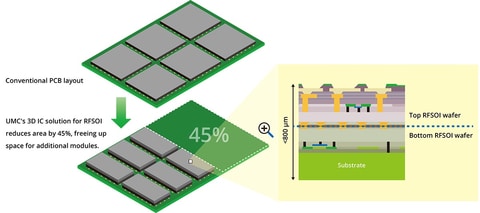In the rapidly emerging world of haptic technology, businesses are increasingly recognizing the value of integrating haptic feedback into their products. In a study conducted by Immersion Corp. on consumer attitudes about high-definition haptic effects in smartphones, a vast majority of respondents (~90%) said they prefer mobile phones that offer haptic feedback. Another study from the University of Oxford found that the participants performed tasks better when notifications came with haptic feedback.
This shows that haptics is poised to play a big role in shaping user perceptions and behaviors. Market research firm CB Insights projects that the haptics industry is projected to grow at a CAGR of 3.7%, reaching a value of $ 5 billion by 2028. Moreover, a gradual shift toward touch-centric consumer gadgets is paving the way for more opportunities in haptic technology.
![]()
Source: Titan Haptics
Integrating haptics into your next product comes with a plethora of benefits. It not only enhances the user experience, leading to improved brand image and customer satisfaction, but can also boost accessibility, safety, and precision. Additionally, haptics can enable businesses to offer customization options, future-proof their offerings, and explore new revenue streams.
That said, the manufacturing of haptic products is no small feat. It requires a blend of multidisciplinary expertise, careful consideration of user experience, seamless integration of technology, meticulous material selection, and strategic planning for scalability.
What are the issues to think about when manufacturing haptic products?
- Multidisciplinary expertise
Haptic technology is a complex field that requires a deep understanding of electronics, firmware, software, and mechanical engineering. For small- to medium-sized enterprises (SMEs), this multidisciplinary nature can pose a significant challenge.
Consider a startup that specializes in virtual reality (VR) gaming and wants to incorporate haptic technology into its products to enhance user experience. This startup may have a team of software engineers who are proficient in developing VR games but lack the expertise in haptic technology.
In order to incorporate their desired haptics, a partnership with a full-service manufacturer or product development firm may be beneficial. This can help bridge the necessary expertise in electronics, firmware, software, and mechanical engineering. As a result, the startup can focus on its core competency, while ensuring that its products are enhanced with the latest haptic technology.
- User experience (UX)
The user experience (UX) should be a priority when designing haptic products. The haptic feedback should be instinctive and enhance the user’s engagement with the product. However, the transition from prototype to mass production may introduce changes that could impact the intended user experience.
This is where a manufacturer with expertise in manufacturing haptic products becomes invaluable. Manufacturers can recommend vibration damping to significantly enhance the haptic feedback. They can also procure high-quality components like buttons—loose buttons that create noise during haptic feedback can negatively impact the user experience.
Manufacturers can also tailor the product to its intended use. For instance, if the product is designed for use in a heavy-duty industry, the motors need to be sealed against environmental factors. This ensures they are not compromised by dust and debris, thereby maintaining the quality of the haptic feedback and, in turn, the user experience.
- Material selection
The choice of materials in the production of haptic products can significantly influence the quality of the haptic feedback. Selecting the appropriate materials is a vital part of manufacturing haptic products, as an unsuitable choice can negatively impact the product’s functionality and effectiveness.
For example, using a rigid material for a haptic glove, which needs high touch sensitivity and responsiveness, may not deliver the subtle haptic feedback required for an immersive virtual reality gaming or medical training experience.
The importance of material selection goes beyond the product’s performance. It also impacts user comfort, market attractiveness, and, ultimately, sales. Experienced haptic product manufacturers can provide insight and suggest suitable materials for the product’s intended use. They can also assist companies in making educated decisions regarding material selection, which also has an impact on cost.
- Scalability
In addition to the technical considerations, it’s also important to consider the scalability of a product. This involves consideration of manufacturing processes, cost, and quality control measures. A well-thought-out design should be scalable for mass production without compromising on quality.
Scalability in manufacturing is a crucial factor in effectively boosting production volumes to satisfy rising market needs while keeping or even reducing costs per unit. Imagine a startup that has created a new high-definition haptic gaming controller. At first, production is on a small scale, with only a few hundred units produced each month. However, as the product becomes more popular, demand surges.
With this increased demand, there are additional factors to consider. While producing more units could decrease the cost per unit due to economies of scale, it could also inflate total costs if not properly managed.
Therefore, it’s crucial to collaborate with a trusted manufacturer to ensure that the quality of the product aligns with the company’s standards, values, and customer expectations.
- Importance of IP protection
In the tech-driven haptic industry, intellectual property (IP) is a critical asset. Protecting this asset can be a complex and challenging process, particularly when dealing with international suppliers. A robust IP protection plan is critical in providing peace of mind for a business.
Consider a company that has developed a unique haptic feedback mechanism for a wearable. This mechanism could be a huge differentiating factor that sets the product apart from similar wearable devices. However, without a solid IP protection plan, the company risks losing its competitive edge if the mechanism is copied or reverse-engineered by a rival.
This risk is particularly high when dealing with international suppliers, as different countries have different laws and regulations regarding intellectual property. For example, if the company is sourcing components from China, it needs to be aware of the Chinese laws on intellectual property and ensure that its IP protection plan is robust enough to protect its technology.
Why a qualified manufacturing partner matters
Manufacturing haptic products can be incredibly challenging and requires careful consideration of the factors outlined above. A qualified manufacturing partner should be capable of addressing all these factors and offering advice on how haptic products can be optimized for their use case.
By understanding these complexities and partnering with a reliable manufacturing program, businesses can successfully navigate the haptic industry and create products that deliver value to their customers.
Kyle Skippon is head of engineering at Titan Haptics Inc.
Related Content









